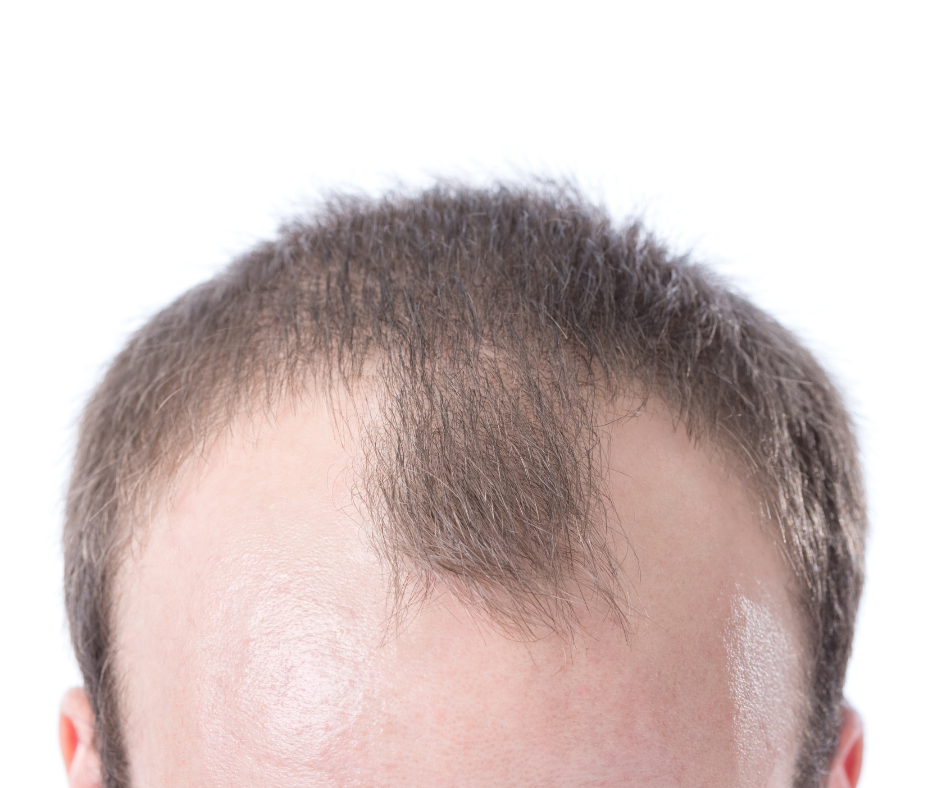Receding hairlines or pattern baldness is measured by stages on the Norwood Scale. What stage of the Norwood scale you are on is determined by the severity of your hair loss. While a receding hairline may not seem like a big issue at the start, it can get out of control in no time. Receding hairlines and baldness are easier to control or reverse at the earlier stages, so you shouldn’t brush it off to the side when you notice. Look for these seven stages of a receding hairline to determine the state of your condition.

Receding Hairline Stages
1. Hair Thinning Around the Temples
There is not much change in the state of your hair or your hairline in the first stage of hair loss. What you’ll notice or what you should look for is thinning around your temples and your forehead. This is part of the hair fall stage and is an early sign of balding. If you notice this, determine whether baldness runs in the family. Also, using natural treatments like oils to strengthen your hair follicles is an excellent way to combat the symptoms early on.
2. Hair Thinning and M-Shaped Hairline
Front baldness continues into stage two on the Norwood Scale. You lose more and more hair at the temples and forehead, which creates an M-shape in your hairline. Natural herbs can help regrow your hair and delay the effects of genetic balding.
3. Visible Balding and M, U, or V-Shaped Hairline
In stage 3, the balding continues, your hairline recedes further and further back, and your hairline becomes a more visible M or creates a U or V shape. This stage increases from the hair fall stage to the baldness stage on the scale. Bald spots begin to occur here as well. Balding individuals can use a derma roller, rosemary oil, and certain shampoos at this stage to promote growth.
4. Hair Loss at the Back of the Head
At this stage, a lot more hair loss occurs, and bald spots become increasingly common. Your crown thins out as well, and you tend to lose hair in more extensive sections. Diet and exercise changes or dry massaging your scalp are ways to treat this stage.
5. Horseshoe or U-Shape at the Crown of Your Head
A horseshoe or U-shape that presents itself at the crown of your head indicates your hairline has receded tremendously. At this stage, hair loss is much more challenging to treat.
6. Visible Scalp and Enlarged Bald Spots
This point on the scale is where your hair is extremely thin, and bald patches begin to widen a lot more than before. The hair loss moves from the top of your head to the sides. Treatments include micro-pigmentation, hair transplants, or more invasive procedures.
7. Receding to the Crown and Very Thin and Little Amounts of Hair
The last stage on the Norwood Scale is where you have lost the majority of your hair. At this point, treatment is not much of an option, so embracing it is probably the best way to go. Toupees and wigs are your go-to if you don’t want to embrace your hair loss.
If you’re struggling with hair loss or think you may be beginning to, call Parker Trichology today! Our experts can determine the cause and stage of your hair loss and provide the best treatment options for you that don’t include medication interventions. Contact us today to set up an appointment!



